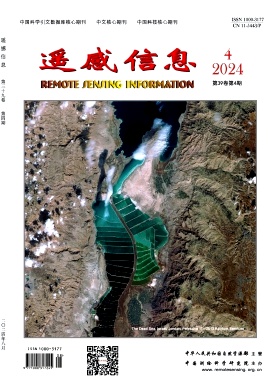湿积雪大结构对SAR测量的影响
引用次数: 1
摘要
作者开发了一个微波模型来评估湿积雪中大型结构(如排水指和通道)对后向散射和极化特性的影响,特别是在l波段。通过数值模拟,研究了排水指槽发育各阶段的后向散射和极化特征。作者指出了SAR在融雪模式改进和雪崩预测与控制方面的应用潜力。本文章由计算机程序翻译,如有差异,请以英文原文为准。
Effects of large structure in wet snow cover on SAR measurements
The authors have developed a microwave model to evaluate the effects of large structures in wet snowcover, such as draining fingers and channels, on backscattering and polarization properties, especially at L-band. With the numerical simulation, they demonstrate the characteristics of backscattering and polarization signatures at each stage of draining finger and channel developments. The authors show the potential of SAR applications for both snow melting model improvement and snow avalanche prediction and control.
求助全文
通过发布文献求助,成功后即可免费获取论文全文。
去求助
来源期刊
自引率
0.00%
发文量
3984
期刊介绍:
Remote Sensing Information is a bimonthly academic journal supervised by the Ministry of Natural Resources of the People's Republic of China and sponsored by China Academy of Surveying and Mapping Science. Since its inception in 1986, it has been one of the authoritative journals in the field of remote sensing in China.In 2014, it was recognised as one of the first batch of national academic journals, and was awarded the honours of Core Journals of China Science Citation Database, Chinese Core Journals, and Core Journals of Science and Technology of China. The journal won the Excellence Award (First Prize) of the National Excellent Surveying, Mapping and Geographic Information Journal Award in 2011 and 2017 respectively.
Remote Sensing Information is dedicated to reporting the cutting-edge theoretical and applied results of remote sensing science and technology, promoting academic exchanges at home and abroad, and promoting the application of remote sensing science and technology and industrial development. The journal adheres to the principles of openness, fairness and professionalism, abides by the anonymous review system of peer experts, and has good social credibility. The main columns include Review, Theoretical Research, Innovative Applications, Special Reports, International News, Famous Experts' Forum, Geographic National Condition Monitoring, etc., covering various fields such as surveying and mapping, forestry, agriculture, geology, meteorology, ocean, environment, national defence and so on.
Remote Sensing Information aims to provide a high-level academic exchange platform for experts and scholars in the field of remote sensing at home and abroad, to enhance academic influence, and to play a role in promoting and supporting the protection of natural resources, green technology innovation, and the construction of ecological civilisation.

 求助内容:
求助内容: 应助结果提醒方式:
应助结果提醒方式:


